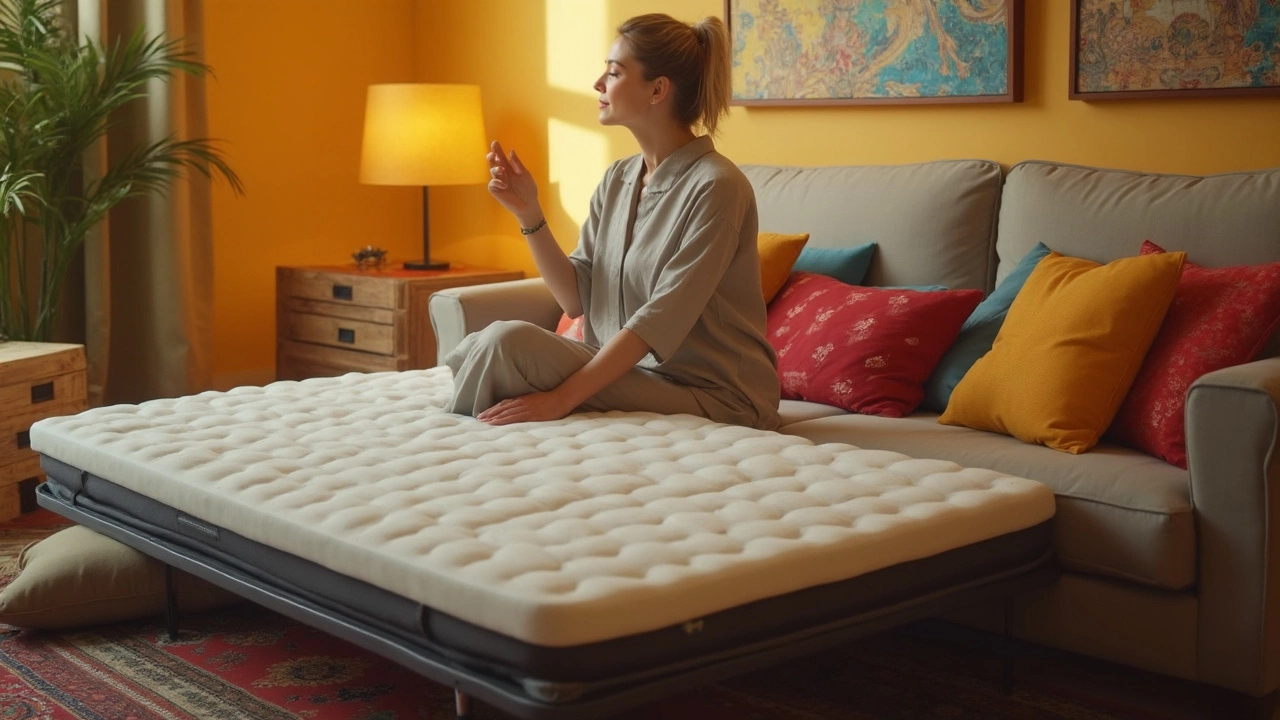Memory Foam Mattress: What You Need to Know
If you’ve ever woken up with a sore back, the mattress is probably the culprit. A memory foam mattress can change that by molding to your shape and reducing pressure points. It’s not magic – it’s just smart material that reacts to your body heat and weight.
Why Memory Foam Feels Different
Traditional spring beds bounce, but memory foam absorbs movement. That means if your partner rolls over, you’re less likely to feel it. The foam also spreads weight evenly, so hips and shoulders get the support they need without digging in. Look for density numbers: 4‑5 lbs/ft³ is a good middle ground for durability and softness.
Picking the Right Mattress for You
Start by deciding how firm you like to sleep. Soft foam feels plush but may sag faster, while a firmer core offers more bounce. Many brands now offer dual‑layer designs – a firm base topped with a plush layer – to give the best of both worlds. Check the cover material too; a breathable, removable cover helps keep the mattress cool.
Don’t forget to test it out. Most online retailers give a 100‑night trial, so you can see if the mattress really relieves pressure. If you’re buying in‑store, lie down for at least a minute on each side. Your body’s reaction is the best indicator.
Another factor is off‑gassing. New foam can release a mild smell for a few days. Choose a mattress with CertiPUR‑US certification if you want low‑VOC emissions. It’s a quick way to avoid that “new‑mattress” odor.
Budget matters, too. A good memory foam mattress can range from $500 to $2,000. Higher price usually means higher density and longer warranty. If you’re on a tighter budget, look for sales around holidays – many brands slash 20‑30% off.
Finally, think about longevity. A mattress that lasts eight years or more saves money in the long run. Rotate it every three months to prevent wear, and use a protective pad to keep spills from seeping in.
Memory foam isn’t a one‑size‑fits‑all solution, but when you match the right density, firmness, and cooling features to your sleep style, it can dramatically improve comfort. Follow these tips, take advantage of trial periods, and you’ll find a mattress that lets you wake up refreshed, not stiff.
Can I Put a Memory Foam Mattress on a Sofa Bed?
Thinking about swapping your sofa bed’s uncomfortable mattress for a cozy memory foam one? You’re not alone—many people want to boost comfort for guests or themselves. This article breaks down whether memory foam mattresses actually work on sofa beds, what problems to watch out for, and what options you have if you want a better sleep experience on your pull-out. I’ll share real tips and clever workarounds, all based on how sofa beds are built and how memory foam behaves. Let’s get your sofa bed as comfy as your regular bed—without any regret purchases.





